Click Pics to ENLARGE
The whole idea of supersetting is, to me, to work two areas that are close together. Chest and back are two such body parts. They are worked with opposing movements. In this case it's supersetting a pushing movement with a pulling movement. The form is particularly applicable to chest and back. I like to train this way when I don't have a training partner, which is most of the time.
I find supersetting effective when I am starting to get back in shape again. It's a good system because you can finish quickly, get right through your workout without too much rest between sets. Since you are not working the same body part set after set, you can go a lot faster. You can also keep the pump, blood circulation, concentrated in a small area.
I have a program made up that I've used in the past that involves nine exercises - four supersets and one single exercise. The latter is the bentover rowing. I start out my routine with it. I like it because it gets the lats pumped before starting to do chest work. The advantage in this is that you get better leverage with the chest movements when your lats are pumped, like in the bench press. I discovered this when I was in South Africa in 1971. I had a lot of time to train, and I had the opportunity to experiment with a lot of different exercises.
I used to do chest before back, but then I reversed them, doing back first, and I found that when I did bentover rowing first I got a real good lat pump, and the chest work went easier. I could use more weight, and consequently got a better pump in the chest, too.
I'd start out with bentover rowing and do 4 sets of 10, adding weight each set. Sometimes I would decrease the reps, doing 12, 10, 8 and 6, increasing the weight with each set. I got where I was using quite a bit of weight, 250 pounds on my last set.
It's important to bend the knees doing bentover rowing. I keep the thighs close together. It takes the strain off the lower back. I must stress that point because you are vulnerable in that exercise, and you must ensure yourself a pain-free training life.
My first superset pair would be bench press supersetted with wide grip chins. In the bench press I use the system of increasing weight and decreasing reps. The first set, a warmup with 135, I don't count. The second set is 185 for 12 reps. That is supersetted with 10 reps on wide-grip chins. You can do either front or back-of-neck chins, whatever you prefer. Next would be another bench press, 10 reps with 225. Superset that with 10 more chins. Then it's back to the bench press, 255 x 8, again followed by 10 chins. Then it's up to 275 for six reps, followed by 10 chins. Lastly, it's 285 for 6, and again 10 chins.
Those three exercises, the bentover rowing, bench press, and chins add a lot of size to the upper body, the torso as well as the chest. Also, the front deltoids are affected by the bench press.
Continuing, I superset incline presses with pulldowns. I prefer a low incline bench press, perhaps 35 degrees up from the horizontal, but always less than 45 degrees. If you go beyond 45 degrees, you are starting to work more deltoid than chest. That seems to be the best angle to strike the upper pec.
You lower the bar to the upper pec, not the neck. The first set is 185 for 12 reps. On the pulldown I'd be anchored, or have someone hold me down, and I'd start with 200 pounds, approximately my bodyweight. I'd move up to 205 x 10 for the next set of inclines, and 10 reps on the pulldown, leaving the weight at 200. I'd go to 225 incline for 8 reps, followed again by 10 pulldowns. Continuing to advance I'd go to 235 on the inclines for 7 reps, followed by 10 pulldowns.
These supersets work upper pec and lats. They exert a broadening effect on the upper body. In order to have a pleasing looking chest development, the upper pecs must be thick.
It would be better if you could do all of these superset exercises without stopping, even while using s heavy a weight as possible. As my training becomes more intense, and I get in better condition, I cut down on my rest periods. By the time I've reached peak condition I'm not resting much at all. It's hard at first, but after a few months of hard training, it becomes possible to practically eliminate rest periods.
The next two superset exercises are flat bench dumbbell flyes supersetted with one-arm dumbbell rows. Dumbbell flyes work the outer area of the pecs, giving them the wide, squared-off look. One-arm dumbbell rows develop a deep sweep from the shoulder to the waist.
Both of these movements indirectly work the biceps. It's one of the reasons I decided to work these two together. The biceps are better affected if you use a lighter weight on the flyes. With a heavier weight you will tend to press and thereby lose some of the biceps action. Using around 50 pound dumbbells for flyes, I can get a fairly strict range of movement. If I go up to 80's it becomes more a press, and triceps get the work.
As usual I start with lighter weights and work up. On the flyes I begin with 50's and do 12 reps. This is followed with one-arm rows with 80 pounds, 10 reps. I'd move to 55's for the second set of flyes, 10 reps, and do the dumbbell rows with with an 80 or 90 pound bell for 10 reps. I'd continue: flyes - 60's x 8 reps and dumbbell rows with a 90 for 10 reps. I hold onto the dumbbell rack with the non-working hand. On the last superset I do flyes with 60's for 7 reps and another set of 10 rows with 90.
I consider dumbbell rowing an important exercise. I did a great deal of specialization on dumbbell rowing when I was training for the 1972 Mr. Universe held in London. I was engaging heavy weights at the time, working as high as 110 on the exercise. I have also gone as high as 100's on the dumbbell flyes. I don't start out like that. Only as my training cycle progresses do I try to use heavier weight. It takes months to build up.
The final superset pair is the pullover supersetted with leverage rowing. Again, I keep the knees bent to keep the strain off the lower back. I have a lower back problem, and of course I suggest a lifting belt if you feel the need for some kind of support and you find it works well for you.
On these two final exercises I usually don't change the weight from set to set. I'd do 12 reps on dumbbell pullover with an 80 or 90 pound bell, supersetted with 10 reps on leverage rowing with about 120 pounds on one end of the bar. I do four supersets with these weights.
I do four sets of supersets on all the exercises except the chins and bench presses, on which I do five sets, sometimes six. I think when you are first starting out on this kind of superset program you should only do three. After a month or two, move up to four sets, and perhaps five as the case may be.
Altogether with this program I do 17 sets of chest and 21 sets of back. That's quite a lot of work. I don't think you have to do more if you are honestly working heavy. Doing much more, like 50 sets per bodypart, is ridiculous. If you are feeling each set deeply, 20 sets per bodypart would be maximum. If I did more than 20 to 25, I would wind up over working. Beyond the optimum number of sets, other, more subtle factors enter into training progress: diet, rest, desire, state of mind and so forth.
Actually, I prefer working chest and back separately. You concentrate more, get deeper into the muscle. By working two parts together you must divide your attention between them. That's both good and bad. With supersets you get a quick, complete workout when you are training by yourself. It also lends variation. It's no good to do the same thing all the time. You can use it for a month or so. If you find it working real well, you can stick with it even longer.
There are many variations of training, and that's one of the interesting things about it.
Bodybuilding is mathematical. Since I am a teacher, I am interested in it from a mathematical viewpoint. There are many combinations of exercises. [It can be pretty fascinating, actually. Take a group of six different chest exercises. You can easily find how many different combinations of groups of two of those six chest exercises there are. And, you can also take two groups - six chest exercises and six back exercises - and find how many combinations of one chest exercise AND one back exercise from the ones on the list there are. You can also find not only HOW MANY combinations, let's call them supersets, there are, but also create a list of the combinations for your own reference. Good Stuff! Start easy and just make a list of, for example let's say 4 chest exercises and 2 back exercises. Okay . . . barbell flat bench, dumbbell flat bench, low incline dumbbell press, and flat flye. Now, two back exercises . . . barbell row, and pulldown. Take the barbell row and combine it in a superset with 1) a barbell flat bench press; 2) dumbbell flat bench press; 3) low incline dumbbell press; and 4) flat flyes. Now do the same with the pulldown, combining it with the four chest exercises to make four more supersets combinations. So now you have, from those two lists, one with four chest exercises and one with two upper back exercises, a total of eight possible superset combinations. With, for example, four chest and six back exercises you want to combine, not including changing the order of chest and back, always having chest first and back as the second half of each superset . . . you just do the same thing down the list. There's formulas, for certain, but at simpler levels like these (and I'd be lost elsewhere, honest), you can manage it without them. Once it goes to tri-sets the possible number of combinations gets pretty large . . . giant sets get crazy with possibilities, and if you start playing around with rep numbers, i.e., intensities, a.k.a. poundage selections, exercises not usually considered in combinations, and rest times, and rep speeds and pauses and/or contraction times . . . well . . . a guy who says lifting is boring and repetitive usually doesn't seem to realize HE is the factor that's boring and repetitive. Go on . . . you know you want to . . . live a little when you lift. Hell Live A Lot When You Lift!!!]
Back to the article - There are many combinations of exercises, and the sequence and order you give to them is very important. Over the years I've given the concept particular attention. In this article I have described one possible program, one that I have used successfully. There are many more possible programs. Personal preference and training temperament determine the selection, and this is the one that works particularly well for me.
This program should arouse your muscles (and your mind) from the lethargy of same-old training. We all, at some time, get bogged down in routines, and the lively pace of this type of supersetting will do wonders for a sleepy mind and metabolism.
Here is the routine in standard layout form:
You lower the bar to the upper pec, not the neck. The first set is 185 for 12 reps. On the pulldown I'd be anchored, or have someone hold me down, and I'd start with 200 pounds, approximately my bodyweight. I'd move up to 205 x 10 for the next set of inclines, and 10 reps on the pulldown, leaving the weight at 200. I'd go to 225 incline for 8 reps, followed again by 10 pulldowns. Continuing to advance I'd go to 235 on the inclines for 7 reps, followed by 10 pulldowns.
These supersets work upper pec and lats. They exert a broadening effect on the upper body. In order to have a pleasing looking chest development, the upper pecs must be thick.
It would be better if you could do all of these superset exercises without stopping, even while using s heavy a weight as possible. As my training becomes more intense, and I get in better condition, I cut down on my rest periods. By the time I've reached peak condition I'm not resting much at all. It's hard at first, but after a few months of hard training, it becomes possible to practically eliminate rest periods.
The next two superset exercises are flat bench dumbbell flyes supersetted with one-arm dumbbell rows. Dumbbell flyes work the outer area of the pecs, giving them the wide, squared-off look. One-arm dumbbell rows develop a deep sweep from the shoulder to the waist.
Both of these movements indirectly work the biceps. It's one of the reasons I decided to work these two together. The biceps are better affected if you use a lighter weight on the flyes. With a heavier weight you will tend to press and thereby lose some of the biceps action. Using around 50 pound dumbbells for flyes, I can get a fairly strict range of movement. If I go up to 80's it becomes more a press, and triceps get the work.
As usual I start with lighter weights and work up. On the flyes I begin with 50's and do 12 reps. This is followed with one-arm rows with 80 pounds, 10 reps. I'd move to 55's for the second set of flyes, 10 reps, and do the dumbbell rows with with an 80 or 90 pound bell for 10 reps. I'd continue: flyes - 60's x 8 reps and dumbbell rows with a 90 for 10 reps. I hold onto the dumbbell rack with the non-working hand. On the last superset I do flyes with 60's for 7 reps and another set of 10 rows with 90.
I consider dumbbell rowing an important exercise. I did a great deal of specialization on dumbbell rowing when I was training for the 1972 Mr. Universe held in London. I was engaging heavy weights at the time, working as high as 110 on the exercise. I have also gone as high as 100's on the dumbbell flyes. I don't start out like that. Only as my training cycle progresses do I try to use heavier weight. It takes months to build up.
The final superset pair is the pullover supersetted with leverage rowing. Again, I keep the knees bent to keep the strain off the lower back. I have a lower back problem, and of course I suggest a lifting belt if you feel the need for some kind of support and you find it works well for you.
On these two final exercises I usually don't change the weight from set to set. I'd do 12 reps on dumbbell pullover with an 80 or 90 pound bell, supersetted with 10 reps on leverage rowing with about 120 pounds on one end of the bar. I do four supersets with these weights.
I do four sets of supersets on all the exercises except the chins and bench presses, on which I do five sets, sometimes six. I think when you are first starting out on this kind of superset program you should only do three. After a month or two, move up to four sets, and perhaps five as the case may be.
Altogether with this program I do 17 sets of chest and 21 sets of back. That's quite a lot of work. I don't think you have to do more if you are honestly working heavy. Doing much more, like 50 sets per bodypart, is ridiculous. If you are feeling each set deeply, 20 sets per bodypart would be maximum. If I did more than 20 to 25, I would wind up over working. Beyond the optimum number of sets, other, more subtle factors enter into training progress: diet, rest, desire, state of mind and so forth.
Actually, I prefer working chest and back separately. You concentrate more, get deeper into the muscle. By working two parts together you must divide your attention between them. That's both good and bad. With supersets you get a quick, complete workout when you are training by yourself. It also lends variation. It's no good to do the same thing all the time. You can use it for a month or so. If you find it working real well, you can stick with it even longer.
There are many variations of training, and that's one of the interesting things about it.
Bodybuilding is mathematical. Since I am a teacher, I am interested in it from a mathematical viewpoint. There are many combinations of exercises. [It can be pretty fascinating, actually. Take a group of six different chest exercises. You can easily find how many different combinations of groups of two of those six chest exercises there are. And, you can also take two groups - six chest exercises and six back exercises - and find how many combinations of one chest exercise AND one back exercise from the ones on the list there are. You can also find not only HOW MANY combinations, let's call them supersets, there are, but also create a list of the combinations for your own reference. Good Stuff! Start easy and just make a list of, for example let's say 4 chest exercises and 2 back exercises. Okay . . . barbell flat bench, dumbbell flat bench, low incline dumbbell press, and flat flye. Now, two back exercises . . . barbell row, and pulldown. Take the barbell row and combine it in a superset with 1) a barbell flat bench press; 2) dumbbell flat bench press; 3) low incline dumbbell press; and 4) flat flyes. Now do the same with the pulldown, combining it with the four chest exercises to make four more supersets combinations. So now you have, from those two lists, one with four chest exercises and one with two upper back exercises, a total of eight possible superset combinations. With, for example, four chest and six back exercises you want to combine, not including changing the order of chest and back, always having chest first and back as the second half of each superset . . . you just do the same thing down the list. There's formulas, for certain, but at simpler levels like these (and I'd be lost elsewhere, honest), you can manage it without them. Once it goes to tri-sets the possible number of combinations gets pretty large . . . giant sets get crazy with possibilities, and if you start playing around with rep numbers, i.e., intensities, a.k.a. poundage selections, exercises not usually considered in combinations, and rest times, and rep speeds and pauses and/or contraction times . . . well . . . a guy who says lifting is boring and repetitive usually doesn't seem to realize HE is the factor that's boring and repetitive. Go on . . . you know you want to . . . live a little when you lift. Hell Live A Lot When You Lift!!!]
Back to the article - There are many combinations of exercises, and the sequence and order you give to them is very important. Over the years I've given the concept particular attention. In this article I have described one possible program, one that I have used successfully. There are many more possible programs. Personal preference and training temperament determine the selection, and this is the one that works particularly well for me.
This program should arouse your muscles (and your mind) from the lethargy of same-old training. We all, at some time, get bogged down in routines, and the lively pace of this type of supersetting will do wonders for a sleepy mind and metabolism.
Here is the routine in standard layout form:
Chest-Back Superset Routine
1) Barbell Bentover Row, 4 x 10 reps. Warmup, create a back pump.
2) Barbell Bench Press, 12, 10, 8, 7, 6 superset with
2a) Wide-Grip Chins, 10, 10, 10, 10, 10
3) Low Incline Barbell Bench Press, 12, 10, 8, 7 superset with
3b) Pulldown, 10, 10, 10, 10
4) Dumbbell Flat Flye, 12, 10, 8, 7 superset with
4b) One-Arm Dumbbell Row, 10, 10, 10, 10
5) One Dumbbell Pullover, 12, 12, 12, 12
5b) Leverage Rowing, 10, 10, 10, 10.
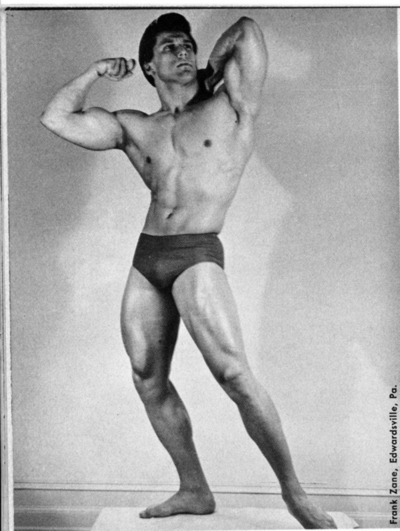
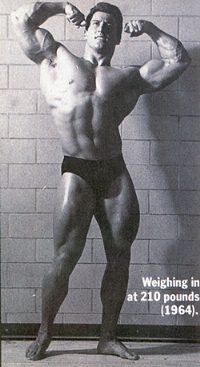
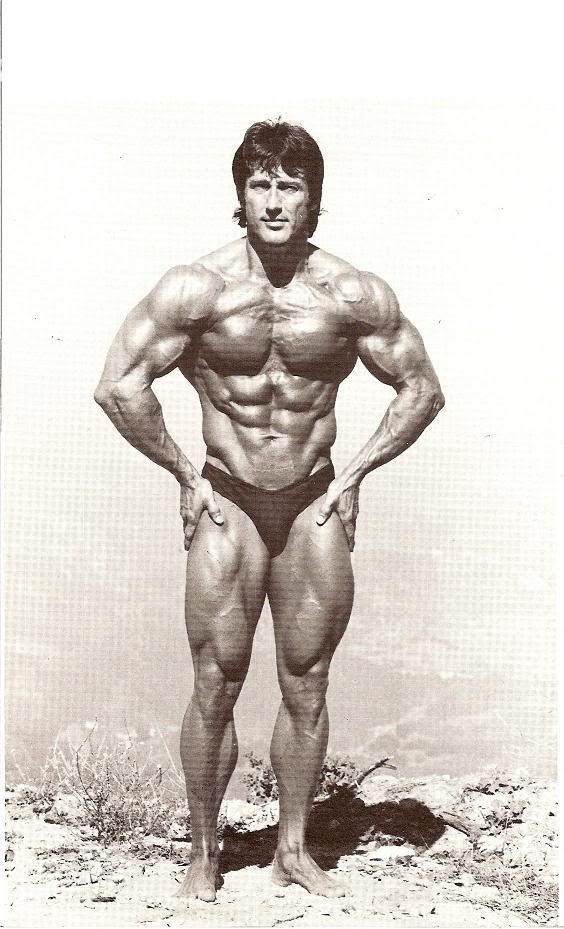

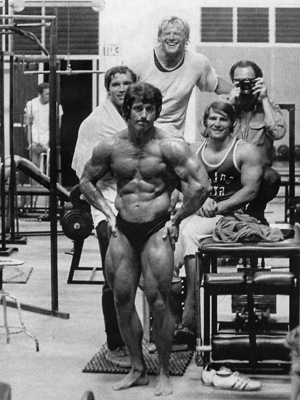

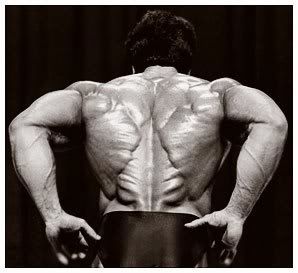
No comments:
Post a Comment